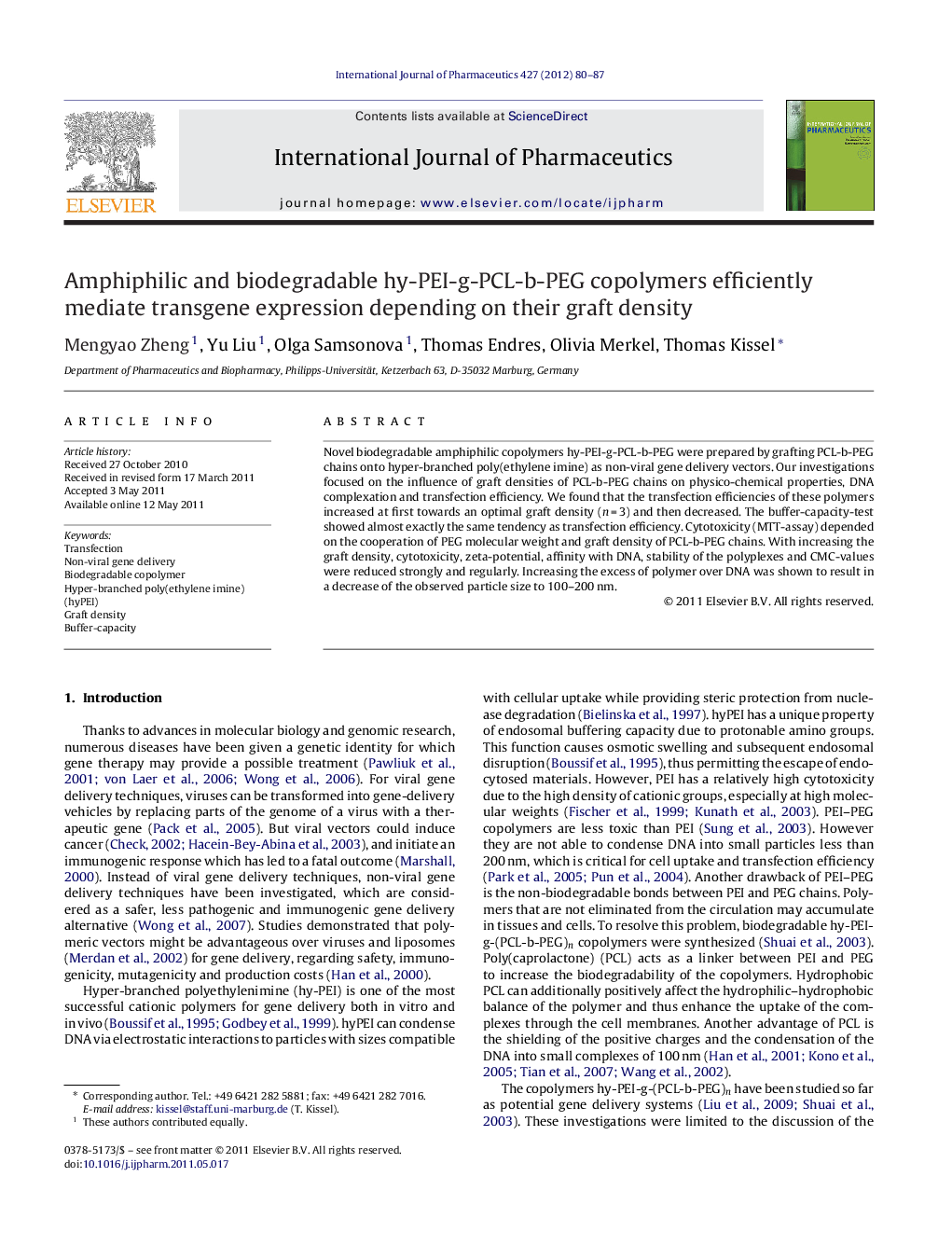| Article ID | Journal | Published Year | Pages | File Type |
|---|---|---|---|---|
| 2502948 | International Journal of Pharmaceutics | 2012 | 8 Pages |
Novel biodegradable amphiphilic copolymers hy-PEI-g-PCL-b-PEG were prepared by grafting PCL-b-PEG chains onto hyper-branched poly(ethylene imine) as non-viral gene delivery vectors. Our investigations focused on the influence of graft densities of PCL-b-PEG chains on physico-chemical properties, DNA complexation and transfection efficiency. We found that the transfection efficiencies of these polymers increased at first towards an optimal graft density (n = 3) and then decreased. The buffer-capacity-test showed almost exactly the same tendency as transfection efficiency. Cytotoxicity (MTT-assay) depended on the cooperation of PEG molecular weight and graft density of PCL-b-PEG chains. With increasing the graft density, cytotoxicity, zeta-potential, affinity with DNA, stability of the polyplexes and CMC-values were reduced strongly and regularly. Increasing the excess of polymer over DNA was shown to result in a decrease of the observed particle size to 100–200 nm.
Graphical abstractSchematic conformation of polyplexes from hyPEI25k-(PCL570-PEG5k)n: at graft densities of 1–5, PEG–PCL chains stay in separated blocks; but it was assumed to form a continuous corona at n = 20.Figure optionsDownload full-size imageDownload high-quality image (144 K)Download as PowerPoint slide
